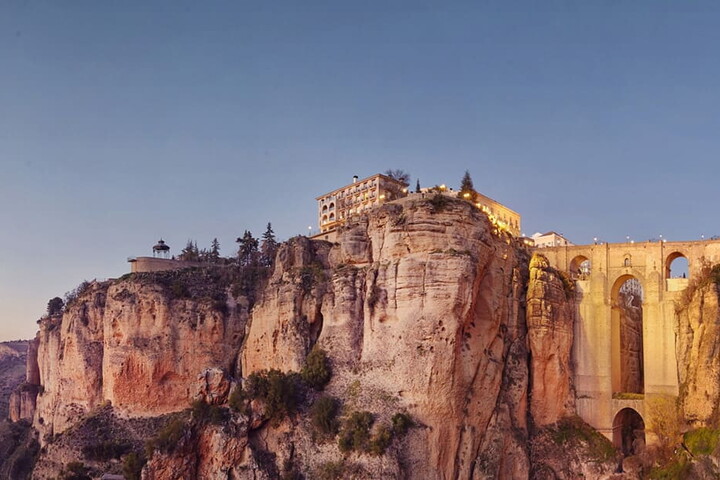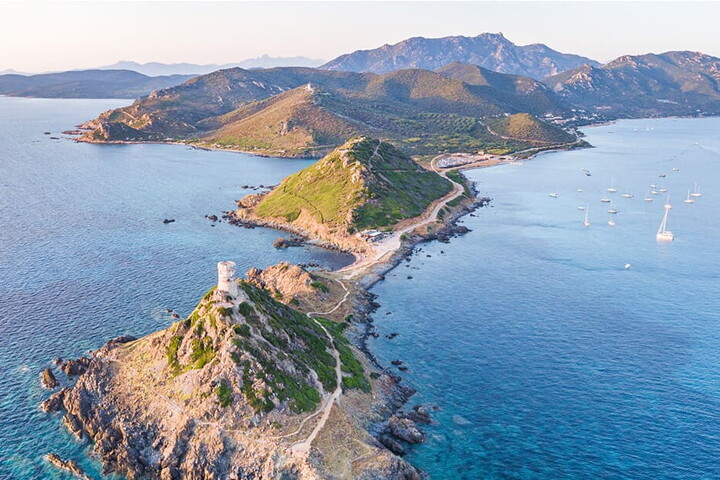The low-sided iron pan filled with goodies and yellow saffron-coloured rice looks like the sun itself. Paella is a dish that lights up Spain and is a firm favourite among first-time visitors and seasoned travellers alike. The pleasure is in sharing. Although restaurants today prepare it even just for two it used to be cooked to feed the whole family, hence the custom of preparing it in large shallow pans up to two metres in diameter.
It used to be cooked over an orange wood-fuelled fire. The choice was determined by the fact that this type of wood was easy to procure in the countryside around Valencia and because it burns steadily. Today, the most popular method is to cook it on a gas stove with a circular coil designed to distribute the heat evenly over the entire bottom of the pan.
It was in the countryside surrounding Valencia, Spain's third-largest city, that the dish originated between the 15th and 16th centuries, and became the emblem of local cuisine. And so, Valencia is where our tour to discover paella starts.

Arroz de Valencia
The basic ingredient of paella is rice, which explains the primacy of Valencia. Arroz de Valencia PDO is a variety of rice with ancient origins dating back to the 13th century, grown in the area of the Albufera Natural Park (incidentally, well worth a visit).
This is a lagoon area, characterised by humid conditions and plenty of water, which stretches for about 21,000 hectares south of the city. There are three varieties of Arroz de Valencia PDO (Senia, Bahía and Bomba), which differ in the shape and size of the grain. In particular, the slightly shorter Bomba rice is used for making the classic Paella valenciana. The other main ingredients are chicken, rabbit and vegetables, which vary according to seasonal availability. Among the most commonly used are peppers, tomatoes, green beans, snow peas and artichokes.
All the ingredients in this recipe hail back to the rural origins of the dish and the need to make the most of what country life had to offer. The right places to sample the classic version in Valencia are Yuso, Casa Carmela, Las Carabelas, El Graner and L'Estibador.
Paella is tradition
Valencians gather around the fire and family to eat paella for Sunday lunch, enjoying the festive atmosphere and the desire to share. It is a dish that takes its time to make. The recipe is only apparently simple: cook the seasoning elements (meat, fish, vegetables), toast the rice, add the vegetable stock and do not stir it anymore until it is done.
This is a fundamental step that sets paella apart from other rice-based recipes, like Italian risotto. Not stirring the rice creates the crispy crust that is a fundamental feature of the dish. Choosing goes with the rice is the name of the game with ingredients spanning from the traditional valenciana recipe or fish for the de mariscos version.
Some solve the meat or fish dilemma by using them both. The paella mixta is where country and sea culture meet. In this case, there are meat and fish morsels in a single preparation, always accompanied by vegetables and with the final addition of saffron. It is a substantial dish, in which chicken complements the delicate flavour of shellfish and crustaceans rather than overpowering them.Try it in Valencia, at Restaurante Navarro, Flor de Valencia, Rincon 33, Arroceria Mirabel and La Taberna Casera.

The sea in a pan
Let's talk about paella de mariscos. Nothing surprising because the Comunidad Valenciana is characterised by a long coastal area spanning the Costa de Azahar in the east to the Costa Blanca further west and the Costa de Valencia in between. It is here that the rural culture of paella has been well reinterpreted to enhance the resources that the sea offers. In this recipe, mussels, king prawns, squid, cuttlefish and langoustines are bound with a little tomato puree and chilli pepper for a spicy touch.
In this case, the broth for cooking the rice is cooked is fish-based, while saffron is always added in the final part to give the typical golden yellow colour. The paella de mariscos is now found everywhere in the seaside resorts of southern Spain, from Catalonia to Andalusia, where it is a popular speciality among tourists but we only trust that served along the coasts of the Comunidad Valenciana. The top destinations: El Bodegon Arruera in Benidorm; Restaurante Arroceria Zafiro in Calpe; Noguera and El Canto in Denia; Arroceria Casa Julia in Gandia.
The winning black version
There is a version of paella de mariscos in which fish is still the protagonist but presented in a very different guise. It is arroz negro or paella negra, which is already striking for its appearance. The predominant colour is, as the name suggests, black. No saffron yellow here, just lots of squid ink.
The base is again the good Arroz de Valencia, soaked in fish broth and with the seasoning that includes only cuttlefish in the traditional version. Versions with prawns, squid and mussels are not uncommon. Widespread along the coasts of the Comunidad Valenciana and Catalonia, arroz negro (arròs negre in Valencian) is often served with the aioli sauce, an emulsion that is very present in Spanish cuisine, similar to mayonnaise but made with garlic.
With all due respect to the Valencians, this time we are heading to Catalonia to enjoy it. Our recommendations: Fonda del Port Olimpic. Xiringuito Escribà and Restaurante Mango in Barcelona; Hostaria Vostra Liar in Palamos; El Rincon de Galicia in Tossa del Mar.
Searching for fideuà
Fideuà is a dish directly related to paella. It differs in that the basic element (rice) is replaced by fideos. These are thin, round noodles, similar to short spaghetti. The most typical version of fideuà features fish, with morsels of monkfish accompanied by molluscs and crustaceans, such as king prawns, mussels, cuttlefish and squid, and vegetables.
Fundamental is the fish stock, which forms the savoury base of the dish together with the tomato puree and spiced with paprika and saffron. It is often served with aioli sauce to be added to taste. It is prepared in the traditional wide, low-sided frying pan like paella, but faster because fideos cook faster than rice.
The dish must be tasted and here are the right places: Chef Amadeo and Cà Fran in Gandia (that is the hometown of this speciality); El Pederniz and Tinto Fino Ultramarino in Valencia; Casa Federico in Denia.




